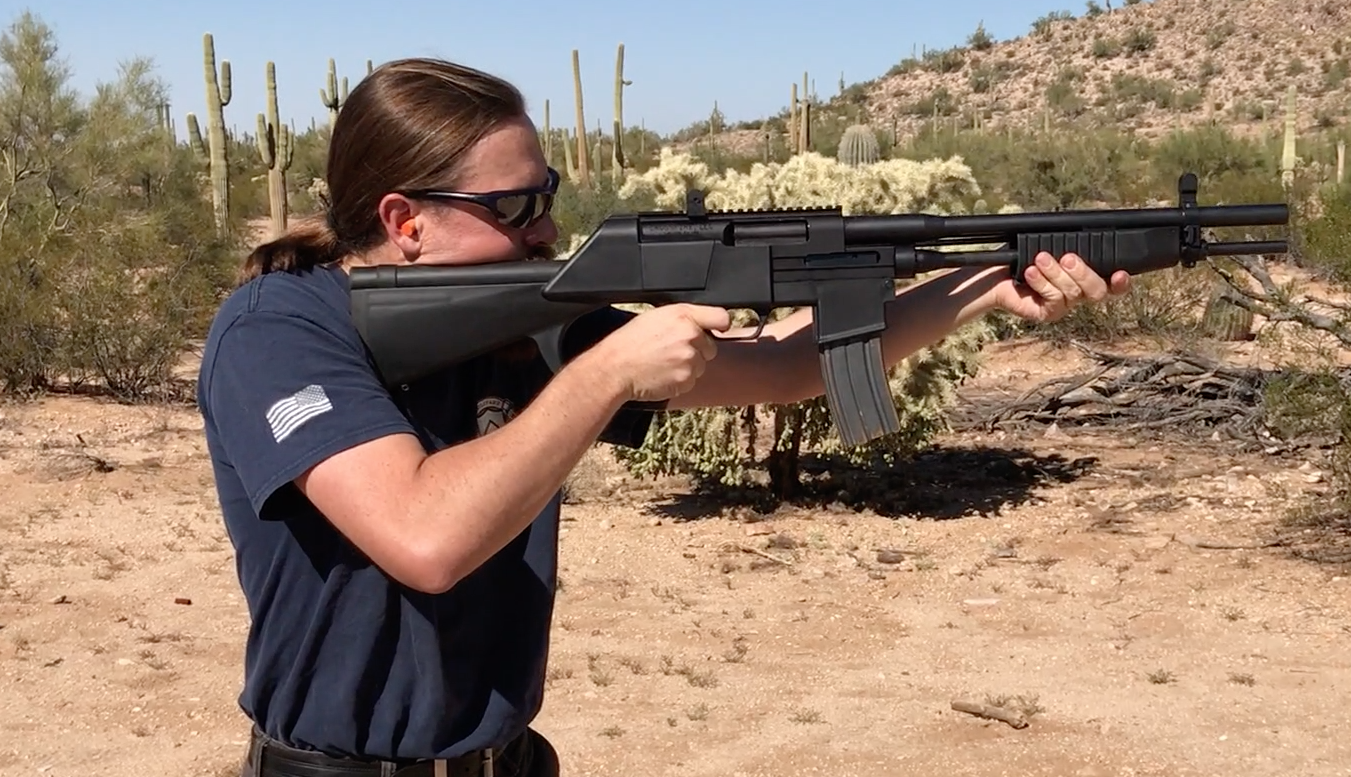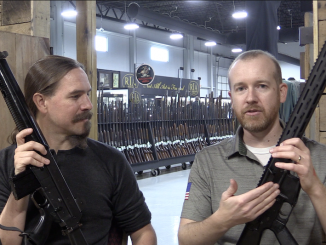In November of 1950, the US Ordnance Department requested an improved version of the Browning 1919 air cooled machine gun for use in tanks. The new version was to be able to feed from either the left or right, a feature which was unimportant for an infantry gun but much more relevant when mounting guns into the tight spaces of an armored vehicle. An interim conversion of existing guns to the M1919A4E1 pattern came first, followed by manufacture of all-new guns by the Rock Island Arsenal and Saco-Lowell company from 1955 until 1957.
The design of the gun fell to Bob Hillberg at High Standard. He came up with a clever set of reversible plugs to change the bolt between left and right hand feed, as well as a captive recoil spring, manual safety, improved top cover and rear cover latches, and several other strengthened parts. He also incorporated a charging handle extension with integral manual hold open and a link ejection chute that could be mounted to either side of the gun. His T153 design was formally adopted as the M37, in caliber .30-06. A 7.62mm NATO version (the M37E1) followed as well. The M37 would serve into the late 1960s on the M48 and M60 tanks as well as several helicopters.




Did the BSA Colt .303 aircraft version have the same ability to be swapped left to right, seems logical for aircraft mounts. Be nice if you could compare the two.
I do not know about BSA, but Fabrique Nationale version of Browning recoil-operated machine gun, could be configured to feed from either side, see 1st photo from top xor 1st photo from bottom here: http://browningmgs.com/FN/02_Aircraft.htm
Note two mirrored alternative path on top of bolt of aircraft version.
Don’t confuse the aircraft .30 (US AN-M2 .30 cal)with the 1919 variants as they are quite a bit different and no parts interchange. The Brit .303 aircraft comes from this family, as does the commercial Colt. The M37 found it’s way through the system and cropped up in all sorts of applications, as Ian alludes to. Armor, gun trucks, ship board mounts and early helicopter gunship designs utilized them. The M37 was going to be replaced by the M73/M219 series ( in armor anyway) but they proved problematic and unreliable so the M37 carried on.
I am wondering how M37 would fair against South*African MG4 machine gun, also M1919 derivative also used as weapon of Cold War-era combat vehicle, namely RATEL
http://www.tanks-encyclopedia.com/coldwar/South_Africa/ratel/
*different names could be encountered, like Lyttleton Engineering Works MG4 or Denel MG4, I am not sure which one is correct, nonetheless this weapon should not be mistaken with H&K machine gun of same name.
Also how does M37 fair against Ksp m/42? If such comparison is possible at all, as these use different cartridges (second one 8×63 mm patron m/32).
I trained on the M219 in basic training on the M60A1 tank at Fort Knox Ky in 1977. I was stationed in West Germany. The M219 was on the tanks until 1978 when they were replaced with the Belgian M240.
Only in the 60’s would anyone even think about driving around with a dozen full auto machine guns… Today he’d be put on the No-Fly list and whatnot.
I am always amazed at how, when the right mind gets ahold of a design, they can totally change its potential utility. There is genius in those raceways, cover latches, charging handle, and captive spring. Anyone who can simplify the process that others could not always impresses me.
I had the M37 training in 1968 at Fort Knox as an armor crewman. Later I received training on the M73/219. On my first real duty assignment as a tank commander in Korea, my M48A2C tank mounted an M37 as a coaxial MG. Unlike the M73/219, which seldom made a firing run without multiple jams, the M37 was absolutely reliable.
Firing from a closed bolt, though, one had to pay attention to the barrel temperature to preclude cook-offs, and in order to swap barrels, the gun needed to be taken out of its mount, a not small task.